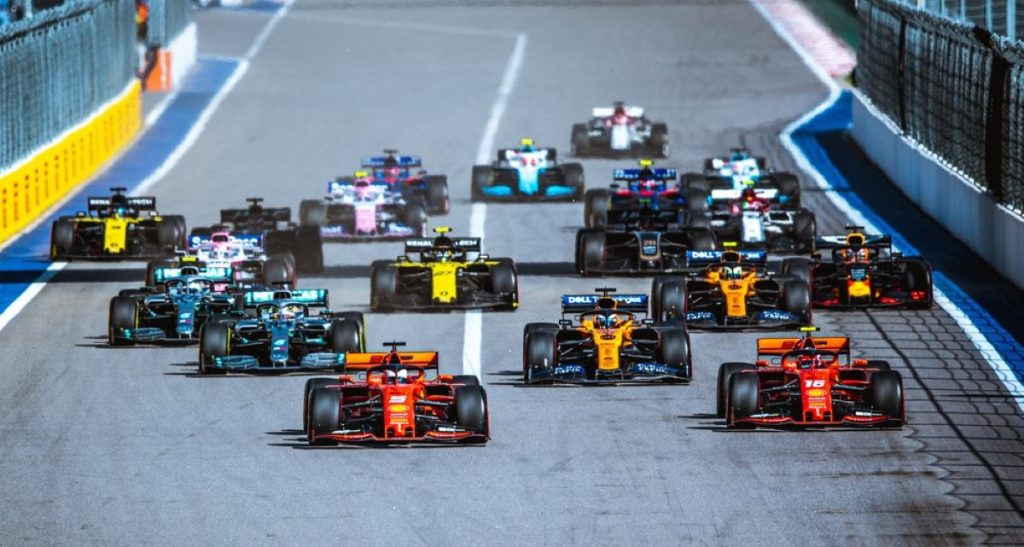It could significantly alter the competitive dynamics.
Others are reading now
The 2025 Formula 1 season witnessed a significant regulatory shift at the Spanish Grand Prix, as the FIA introduced stricter front wing flexibility tests to curb aerodynamic advantages gained through wing flexing.
This move aimed to level the playing field, but its effectiveness and impact on team performances have been subjects of debate.
Understanding the New Front Wing Regulations
Effective from the Spanish Grand Prix, the FIA’s revised Technical Directive TD018 tightened the permissible flexing of front wings. Previously, under a 100kg load applied symmetrically, a front wing could flex up to 15mm, this has now been reduced to 10mm. When the load is applied asymmetrically, the allowable deflection has decreased from 20mm to 15mm. Additionally, the deflection limit for front wing flaps under a 6kg point load has been reduced from 5mm to 3mm.
The FIA’s decision to implement these changes mid-season was based on observations from the latter half of the 2024 season, where teams were suspected of exploiting wing flexibility for aerodynamic gains. To avoid imposing sudden changes at the start of the season, which could have led to increased costs and scrapped components, the FIA opted for a deferred introduction, allowing teams time to adapt .
Also read
Team Responses and Adaptations
Despite being at the center of the flexi-wing discussions, McLaren appeared unfazed by the new regulations. Team principal Andrea Stella stated that the impact of the changes was “relatively negligible,” and simulations predicted minimal effects on performance. McLaren had already tested a compliant front wing at Imola, ensuring readiness for the Spanish Grand Prix.
In contrast, Ferrari viewed the regulation change as a potential “game changer.” Team principal Fred Vasseur expressed optimism that the new rules could disrupt the existing hierarchy, providing an opportunity for Ferrari to close the gap to the frontrunners . However, adapting to the new regulations came at a cost, as Ferrari reportedly allocated 50% of their front wing development budget to comply with the updated standards.
Red Bull had previously raised concerns about McLaren’s wing designs, prompting the FIA’s scrutiny. However, the team did not anticipate significant changes in the competitive landscape due to the new regulations. Team principal Christian Horner remarked that the effects were “reasonably subtle” and that it was too early to determine any substantial impact.
Divergent Opinions on the Rule Change
The introduction of the stricter front wing tests elicited mixed reactions within the F1 community.
Lewis Hamilton, driving for Ferrari, criticized the changes as a “waste of money,” arguing that the modifications had little effect on performance and that resources could have been better allocated.
Conversely, Jonathan Wheatley, Team Principal of Stake F1 Team KICK Sauber, viewed the regulation as a “major performance differentiator,” suggesting it could significantly alter the competitive dynamics, especially for mid-pack teams.
Oscar Piastri, McLaren’s championship leader, downplayed the impact, describing the regulations as “overhyped” and expressing confidence in McLaren’s continued performance.
On-Track Outcomes Post-Regulation
Despite the regulatory changes, McLaren maintained its dominance. Oscar Piastri secured pole position at the Spanish Grand Prix, with teammate Lando Norris close behind. Red Bull’s Max Verstappen qualified third, indicating that the new rules did not drastically alter the competitive order.
The FIA has indicated that it will continue to monitor the situation and is open to further adjustments if necessary, emphasizing the importance of maintaining fairness and competitiveness in the sport.
Conclusion
The FIA’s mid-season clampdown on front wing flexibility aimed to ensure a level playing field by curbing aerodynamic advantages gained through wing flexing.
While the regulation prompted significant technical adaptations and sparked varied reactions among teams and drivers, its immediate impact on the competitive hierarchy appears limited.
As the season progresses, the long-term effects of this regulatory change will become more evident, potentially influencing team strategies and performances in the races to come.


